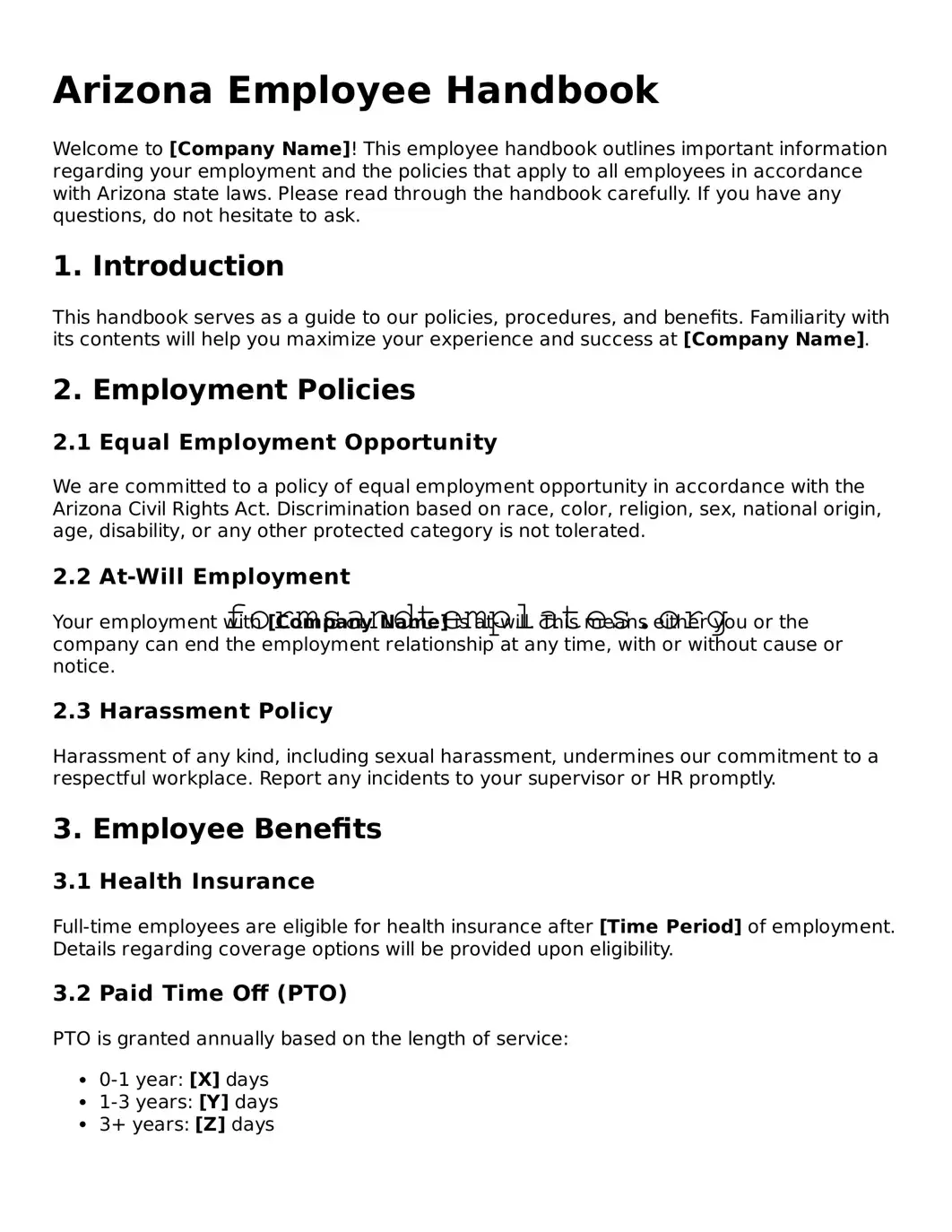Arizona Employee Handbook
Welcome to [Company Name]! This employee handbook outlines important information regarding your employment and the policies that apply to all employees in accordance with Arizona state laws. Please read through the handbook carefully. If you have any questions, do not hesitate to ask.
1. Introduction
This handbook serves as a guide to our policies, procedures, and benefits. Familiarity with its contents will help you maximize your experience and success at [Company Name].
2. Employment Policies
2.1 Equal Employment Opportunity
We are committed to a policy of equal employment opportunity in accordance with the Arizona Civil Rights Act. Discrimination based on race, color, religion, sex, national origin, age, disability, or any other protected category is not tolerated.
2.2 At-Will Employment
Your employment with [Company Name] is at-will. This means either you or the company can end the employment relationship at any time, with or without cause or notice.
2.3 Harassment Policy
Harassment of any kind, including sexual harassment, undermines our commitment to a respectful workplace. Report any incidents to your supervisor or HR promptly.
3. Employee Benefits
3.1 Health Insurance
Full-time employees are eligible for health insurance after [Time Period] of employment. Details regarding coverage options will be provided upon eligibility.
3.2 Paid Time Off (PTO)
PTO is granted annually based on the length of service:
- 0-1 year: [X] days
- 1-3 years: [Y] days
- 3+ years: [Z] days
4. Workplace Expectations
4.1 Attendance
Regular attendance is essential. If you are unable to report to work, inform your supervisor as soon as possible.
4.2 Code of Conduct
Employees are expected to conduct themselves in a professional manner at all times. This includes:
- Respecting colleagues and clients
- Maintaining confidentiality
- Adhering to safety protocols
5. Acknowledgment of Receipt
Please sign below to acknowledge that you have received and reviewed the Employee Handbook.
Name: [Employee Name]
Date: [Date]
